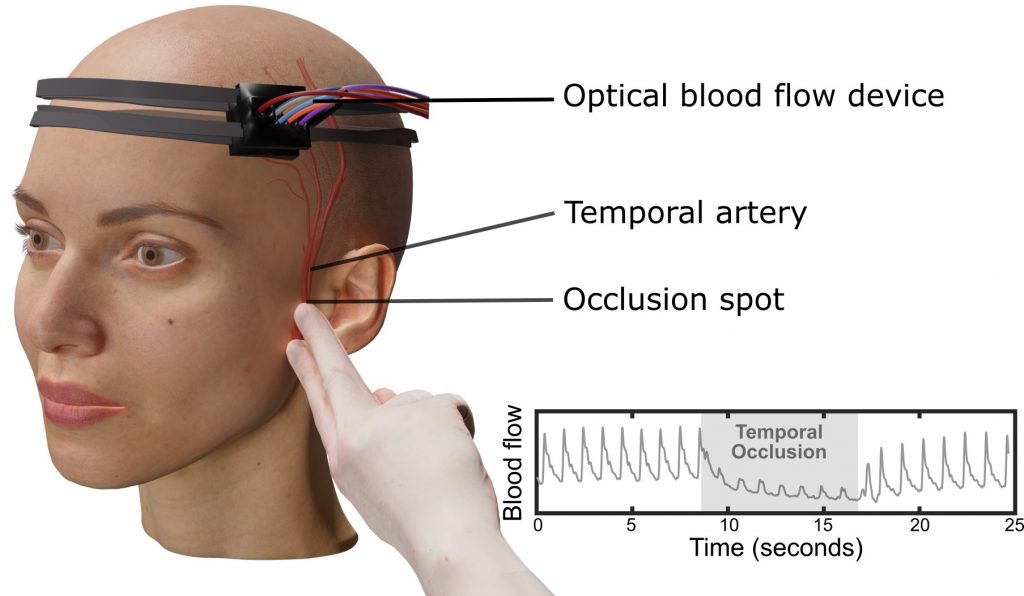An array of detectors points to new methods of monitoring blood flow after traumatic brain injuries and stroke.
From the Journal: APL Bioengineering

WASHINGTON, Oct. 21, 2025 — Measuring how well blood flows to the brain is crucial for understanding a wide range of neurological issues, from strokes to migraines to traumatic brain injuries. Obtaining such measurements noninvasively, however, remains a challenge. The scalp and skull not only obstruct viewing the brain directly but also have their own blood supply, further complicating cerebral blood flow measurements.
In APL Bioengineering, by AIP Publishing, researchers from the California Institute of Technology, the University of Southern California, Rancho Research Institute, the University of Toledo, and the National Neuroscience Institute of Singapore developed a system that uses optical spectroscopy to measure blood flow noninvasively.
Using an optical imaging method, the device can target different depths to distinguish between blood flow to the scalp and blood flow to the brain. The team demonstrated its use by temporarily blocking blood flow to the scalp at the superficial temporal artery and isolating its blood dynamics.
The work marks the first time this type of imaging — speckle contrast optical spectroscopy, which relies on shining light into blood and analyzing the blurring of speckles from elements of the blood — has been configured to tune out noise from blood flow to the scalp.
“We’ve established a safe, simple, and repeatable experimental framework that other researchers can use to validate their own noninvasive optical systems,” said author Max Huang. “Instead of relying solely on simulations, groups can now use superficial temporal artery occlusion to get real-world data on their device’s scalp versus brain sensitivity.”
The device is housed in a headband running across the forehead and contains a light source and seven detectors arranged in increasing distance from the artery. Closer detectors pick up shallower optical data, like signals from the scalp, while ones with a greater distance receive a deeper and broader set of signals.
Identifying which signals are closer to the skin’s surface, the group’s device can delineate which parts of the deeper signals correspond to blood flow in the brain.
They also found that temporarily blocking the superficial temporal artery, a blood vessel that originates near the ear and provides blood flow to the front of the scalp, significantly diminished the signals from the shallower channels corresponding to the scalp but didn’t change the signals from deeper channels. They did this by gently pressing down on the patients’ superficial temporal artery for a few seconds and measuring signals.
“Some individuals have thicker scalp or skull layers, while others have thinner ones,” said author Simon Mahler. “This variability makes it difficult to design a single device that can be easily used across a large cohort of participants and means that results can vary between individuals.”
The group next looks to expand on the device, including further validation and adding a sensor that allows it to be placed directly onto the skin.
###
Article Title
Authors
Yu Xi Huang, Simon Mahler, Maya Dickson, Aidin Abedi, Yu Tung Lo, Patrick D. Lyden, Jonathan Russin, Charles Liu, and Changhuei Yang
Author Affiliations
California Institute of Technology, University of Southern California, Rancho Research Institute, University of Toledo, National Neuroscience Institute of Singapore
